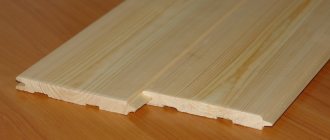Types of hammocks
Currently, the range of hammocks is pleasantly surprising.
First of all, they differ in size. Based on the purpose of the design, you can choose:
- for an adult – length – at least 2 m, width – from 1.2 m;
- for teenagers – they are smaller in size and have more original colors;
- for babies - squat hammocks with protection against falling out;
- a hammock chair is the best option if there is a lack of free space.
Design features of hammocks
The ease of use of the hammock is definitely influenced by the presence of transverse strips along the edges of the surface. Models without such an accessory take up less space and create a feeling of free flight, fitting as closely as possible to the body. But they are quite difficult to get out of, so they are not recommended for older people and families with small children.
The presence of a frame is also an important fact. Frame structures are fully equipped and therefore do not require auxiliary supports or fastenings.
Divided into:
- prefabricated - allow you to use a hammock in any place you like. It is enough to carry the device with you folded;
- stationary - not designed for movement, have a significant weight of supports, but are more stable and durable.
What is yoga in a hammock?
Before installing a special hammock in your apartment, you should understand what it is.
Today, most experienced and qualified specialists call this direction only a certain type of yoga, since it focuses on artistic gymnastics, coupled with yogic asanas and Pilates.
Anti-gravity classes can be called full-fledged yoga solely because a person suspended in the air performs the exercises consciously, simultaneously combining them with correct breathing and knowledge from mediative practice.
And a special fabric hammock, sewn in the form of an original trapezoid, helps him in this.
It is this kind of hammock, attached to the ceiling, that allows you to perform various exercises right in the air. It is usually hung a meter from the floor, which allows you to observe certain safety measures and get a good feeling of weightlessness during exercise.
Almost everyone can do fly yoga, from inexperienced beginners to real professionals. It is ideal for children and pregnant women.
You just need to choose a hammock and an instructor, so that after some time you will learn to control your body and realize the hidden capabilities of your body. Not to mention a good mood and a feeling of complete relaxation.
Location
Most often, a hammock takes pride of place in the chill-out area, children's room or on the loggia. However, the variety of design options and colors allows you to choose a model that matches various stylistic decisions.
A suspended structure for relaxation can be located in any room, be it: living room, bedroom, office, library, veranda, balcony, the main thing is that the dimensions allow it.
Choosing a place for a hammock chair
- A hammock chair is a good solution for the functional decor of your balcony or loggia. And if space allows, then they can be placed in pairs, next to each other, or vice versa - opposite.
- A children's room is a great place for a hammock chair. Children will be delighted with an unusual thing in which they can swing like on a swing and play many games.
- If you have some free space in your living room, a hammock chair can be a great place to relax. Just choose the right color and your chair will fit very organically into the interior of the room.
- An interesting and practical option would be to place a hammock chair in your office or just near a desk with a computer and use it instead of a regular chair.
- On the terrace or veranda of your private home, a hammock chair is an interior detail that will always be relevant.
A good solution would be to install a small table near the chair and use it as a convenient stand for placing a laptop, phone, books and other things that you may need while in the hammock. You can put a cup of coffee and a table lamp on the table if you read in the evening.
Wherever you place your hammock chair, you can always free up the space it occupies if necessary. It will take you no more than a couple of minutes to remove your chair from its mounting and put it in a closet or pantry.
Ways to attach a hammock
To place a frameless hammock in the right place, you need to worry about the reliability of the fastenings. As a rule, all models are equipped with a minimum set for fixation, but it is always worth having a backup option in the form of anchors, special rings and screw-in hooks.
Walls, ceilings, and wooden vertical posts can be used as supports. To hang a hammock, you need to drill two holes in the selected surface and fix an anchor with a ring or hook at the end in each of them. The presence of carabiners will allow you to quickly remove the hammock if necessary.
Producing countries
Brazil is the leader in the production of hammocks. Quite roomy models made of cotton fabric, decorated with chic fringe, are produced here. Such products are real works of art.
In second place is Mexico. Her calling card is colored synthetic hammocks without frames. Bright and impressive.
Lovers of handmade crafts will love Caribbean and Colombian hammocks woven from flexible vines. They are processed with natural dyes and made using special technologies, the secrets of which are passed on from generation to generation.
How to hang a hammock at home
Who said that a hammock is exclusively for outdoor recreation? Of course, it was originally intended to be hung between trees, but an equally interesting solution would be to hang a hammock at home . Just imagine that without leaving your apartment, you can lie down in a hammock at any time and enjoy the pleasant swaying, feeling of harmony, weightlessness and lightness from being in it. By installing a hammock in your apartment, you will get many new interesting opportunities; you can find out more about this in our article “10 reasons to hang a hammock in your home.”
So, let's say you have already realized the beauty of hanging a hammock inside your home, what next? First of all, you should decide on the choice of the hammock itself and the location of its installation in your home. We do not recommend using a hammock with slats; a cotton-based hammock without slats or a travel hammock is better suited for installation in the home. However, if you already have a hammock with slats, you can still hang it, the main thing is to correctly calculate its location so that the slats do not pose a threat to the wallpaper and furniture of your home.
Next, you should decide on the location of the hammock and the method of attaching it. Think about where you would like to have an unusual relaxation area? Perhaps this will be your bedroom, living room, or maybe a balcony or loggia. Do you plan to watch movies in a hammock on your TV or computer screen, or maybe you would prefer to admire the view from the window? Would you like to stay in it in solitude or, conversely, use it while communicating with family or friends.
The hammock can be located both between opposite and between adjacent walls. It is very important that themselves are solid. Walls based on concrete or brick are perfect for this purpose; anchor bolts or special fastening plates with an eye can be used as fastening to them. It is also possible to attach a hammock to a wall made of plaster and other loose materials, but this task is more difficult, and the reliability of the fastening will be lower. The technology of this type of fastening depends on many factors and its description is beyond the scope of this article. The minimum distance between the two anchors you will hang your hammock on may even be slightly less than the full length of the hammock. But it is better if this distance is greater, so that it is possible to adjust the position of the hammock using ropes.
Having decided on the place where the hammock will be located, it is important to mark the height of the mounting on the wall. Here are the main factors to consider:
- The mounting height depends on the distance between the mounting points. The height should be approximately 2 times (up to 2.3 is possible) less than the length between the supports.
- If the area of the wall where you plan to place the fasteners is a passage place, then for safety reasons it is better to place the fasteners no lower than the height level of the tallest family member.
- It will be more convenient if you place the mounting height no higher than arm’s length, so that the hammock can be quickly hung and removed.
- If you have a large distance between the fastenings (4-6 meters) and at the same time you want the hammock to be located not in the center, but offset towards the wall, then for a more even position of the hammock, it is advisable to place the far support higher than the near one.
Taking these recommendations into account, we obtain the following conclusions: It is better to place the fastenings at a height of about 180 cm from the floor. With a distance between the supports of about 3-3.5 meters, you can place the fastenings lower (about 150-175 cm), and with a distance of 4-6 meters, on the contrary, higher (190-210 cm).
If you are planning to install a hammock with slats, then the mounting height can be made 20-30 cm lower than the recommendations given, and it is advisable to select such a minimum length of ropes that the sagging of the hammock will become small and it will be tensioned. The height of the attachment also depends on how far from the floor you would like to lie in the hammock. So, if children will actively use the hammock or you also want to use it as a seat with your feet resting on the floor, then it is advisable to make the distance from the loaded bottom point of the hammock to the floor about 40 cm. If you plan to watch movies on a PC or TV in the hammock , then this distance should be about 70 cm. In general, it is more pleasant to lie in a hammock that is hung higher than one that lies closer to the floor, but at the same time it becomes a little more difficult to climb there. The ideal option is to make 2 loops on each rope so that you can hang the hammock in 2 modes - a safer mode (in which you can rest your legs on the floor) and a classic mode (when the hammock is located higher).
Before direct installation, it would not be superfluous to visually check the convenience of the hammock’s location. This will require a 2nd person. Take your hammock with it with the ropes attached to it and attach their ends to the future attachment points. Adjust the correct and symmetrical length of the ropes. Once again, inspect everything carefully to see if any furniture will interfere with your swinging in the hammock, and, on the contrary, whether you will be able to carefully push off from any support in order to switch to the swinging mode, if you want to. Will it be convenient to watch movies or communicate with other people in the room, if this is planned? Remember that the hammock should not sag too much, otherwise it will not be very comfortable.
Once we have decided on the location and height of the fastening, we move on to installing the fastening itself. As stated above, the simplest, most accessible and reliable method is to use anchor bolts. A rounded or hook-shaped anchor bolt with a diameter of 10 mm and a length of 60-80 mm is suitable. If installation is carried out in a plastered brick wall, then additional washers will be needed.
Drill a hole in the marked places. It is recommended to pre-drill a hole with a smaller diameter (for example 6mm), then drill it out to 10mm. We clean the hole from dust, install the anchor bolt and, holding the tip of the anchor, tighten the nut until it stops. Everything is ready, now all that remains is to hang the hammock.
If the distance between the supports is greater than the length of the hammock, then additional ropes will be needed for fastening. There are many methods and knots for attaching a hammock to supports, we suggest the following. At the ends of the rope, make a “simple conductor” knot (for information on how to tie this and the next recommended knot, read a separate article: Knots for attaching a hammock). Next, thread the free edge of the rope into the eye of the hammock loop, and then into the eye of the formed knot (if the edges of the hammock are equipped with carabiners, then we simply attach them to this knot). Repeat the same with the 2nd rope. This way we will attach the ropes to the hammock.
Now all that remains is to secure the edges of the ropes to the fastening. If the fastening is made in the form of a hook, then you can only get by with knots on the rope; if it has an eye (closed loop), then you will also need carabiners. As noted above, for convenience and versatility, you can make two knots in increments (20-40 cm) on each side of the rope in order to be able to attach your hammock in 2 positions - higher and lower. Having decided on one or two nodes you will use, we move on to the node itself. In this case, we recommend using the figure eight knot. Having tied it and fixed it on the mount, we move on to the test, to do this we carefully plunge into the hammock to track the resulting distance to the floor.
If the distance does not suit us, we bandage the “eights” making appropriate adjustments to the length of their location. If we use 2 pairs of figure eights, we first adjust the required length of the nodes closest to the hammock, then the ones farther away. That's it, congratulations, you have hung a hammock in your home, enjoy your time in this wonderful and comfortable bed floating in the air.
You can also find out more about installing a hammock in your home.
by watching our video instructions:
So, now you know how to hang a hammock in a house (apartment), be it your bedroom, living room, balcony or loggia. The total work on installing a hammock will take no more than an hour, and the joy, comfort and convenience that a home hammock will give you will last for years!











